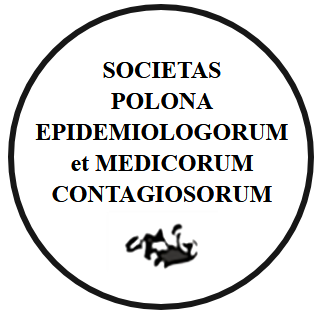ABSTRACT
INTRODUCTION. Caries is a social disease that affects both children and adults. Parents have a significant influence on the formation of pro-health habits and the state of their children’s oral health.
AIM OF THE PAPER. The main aim of the study was to assess the reasons why children and their parents come to the dental office. In addition, the condition of the teeth, the type of performed procedures and the correlation of the oral health between children and their parents were assessed.
MATERIAL AND METHODS. During the study, 162 patient’s charts were analyzed from two different dental offices in Crakow. There were 81 parent-child pairs (one child per parent) who were treated in the same dental office between 2004 and 2018. During the first patient visit (parent or child) in the office, the reason for the visit and condition of patient teeth were evaluated. This analysis was based on the dental diagram using the DMF/dmf (Decay-Missing-Filled) Index. Data regarding performed medical procedures during each office visit were collected and documented.
RESULTS. In most cases, children came to the dental clinic because of a toothache or cavities caused by caries (75.3%). None of children were ever seen in the dental office for an initial adaptation visit under the age of two.
During the first visit, caries was confirmed in 72% of children and 95% of parents. Correlation between child’s DMF/DMF+dmf/dmf and its parent’s DMF indicated a positive linear relationship between these two variables (r = 0.348, p = 0.001). The increase in the total number of children visits to the dental clinic was associated with the increase in the number of visits of their parents (r = 0.327, p = 0.003). The most often performed medical procedures were check-ups (98.8% children and 53.1% parents) and fillings of the permanent teeth (65.4% children and 85.2% adults).
CONCLUSIONS. The majority of patients came to the dental clinic because of caries and its complications, not prophylactic procedures. Condition of the tooth hard tissue for both children and parents was less than satisfactory. There is a positive linear correlation between the state of patient dental health and the regularity and frequency of visits to the dental clinic for children and their parents.
STRESZCZENIE
WSTĘP. Próchnica jest chorobą społeczną, która dotyczy zarówno dzieci jak i osób dorosłych. Rodzice w znacznym stopniu mają wpływ na kształtowanie nawyków prozdrowotnych i stan zdrowia jamy ustnej swoich dzieci.
CEL PRACY. Głównym celem pracy była ocena przyczyn zgłaszania się dzieci i ich rodziców do gabinetu stomatologicznego. Dodatkowo u dzieci i rodziców oceniano stan uzębienia, rodzaj wykonywanych zabiegów, a także zależność pomiędzy stanem zdrowia jamy ustnej u dzieci i ich rodziców.
MATERIAŁ I METODY. W badaniu przeanalizowano 162 karty pacjentów z dwóch krakowskich gabinetów stomatologicznych. Było to 81 par rodzic-dziecko (jedno dziecko przypadało na jednego rodzica) leczących się w tym samym gabinecie, których wizyty odbywały się w latach 2004-2018. Na pierwszej wizycie oceniano przyczyny zgłaszania się dzieci i ich rodziców do gabinetu stomatologicznego, stan zdrowia zębów przy pomocy wskaźnika PUW/puw/PUW+puw u dziecka i PUW u rodzica oraz rodzaj wykonanego zabiegu u każdego pacjenta. Na każdej wizycie oceniano rodzaj wykonywanych zabiegów u dziecka oraz rodzica.
WYNIKI. W większości przypadków dzieci zgłaszały się do gabinetu z powodu bólu zęba lub obecności ubytków próchnicowych (75,3%), a żadne z nich nie odbyło wizyty adaptacyjnej w gabinecie poniżej 2 roku życia.
Podczas pierwszej wizyty obecność próchnicy stwierdzono u 72% dzieci i 95% rodziców. Liczba PUW/puw/PUW+puw u dziecka korelowała dodatnio z liczbą PUW u rodzica (r = 0,348, p = 0,001). Wzrost liczby wizyt dziecka w gabinecie stomatologicznym wiązał się ze wzrostem liczby wizyt rodzica w gabinecie (r = 0,327, p = 0,003). Najczęściej wykonywanymi procedurami były przegląd stomatologiczny (98,8% dzieci i 53,1% dorosłych) oraz wypełnienie zęba stałego (65,4% dzieci i 85,2% dorosłych).
WNIOSKI. Większość pacjentów zgłaszała się do gabinetu stomatologicznego z powodu próchnicy i jej powikłań, a nie na wizyty profilaktyczne. Stan tkanek twardych zębów zarówno u dzieci jak i rodziców był niezadowalający. Istnieje związek pomiędzy stanem zdrowia zębów a także regularnością i liczbą wizyt w gabinecie pomiędzy dziećmi i ich rodzicami.
Możesz zmienić ustawienia cookies w swojej przeglądarce. Ograniczenie stosowania plików cookies w konfiguracji przeglądarki może wpłynąć na niektóre funkcjonalności dostępne na stronie.





